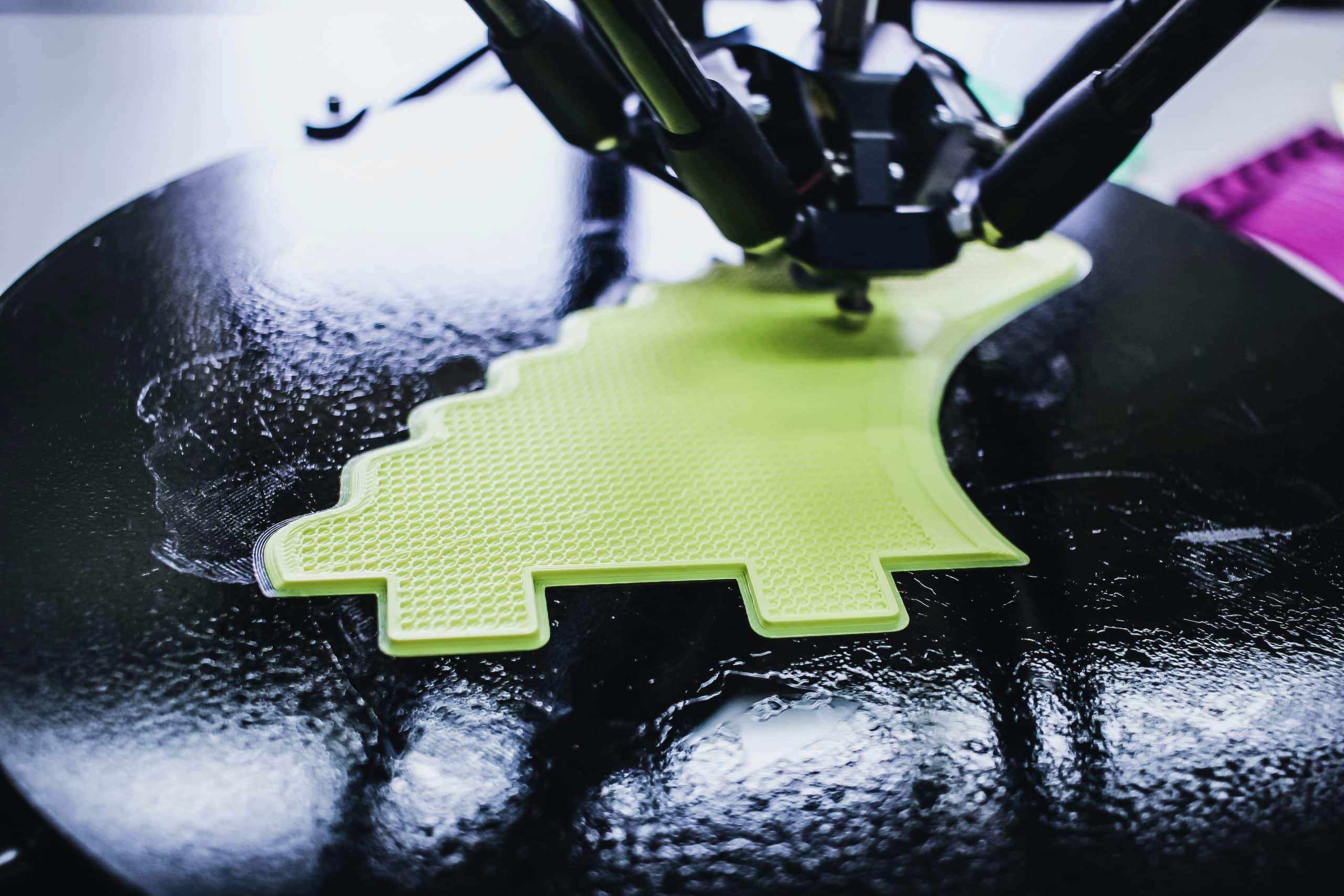In the realm of medical technology, there is an innovation that is steadily making waves and reshaping the landscape: 3D bioprinting. This cutting-edge technology involves the use of 3D printing techniques to combine cells, growth factors, and biomaterials to fabricate biomedical parts that imitate natural tissue characteristics.
As the world advances towards more personalized therapies, the advent of 3D bioprinting has opened up a myriad of promising opportunities in various sectors, particularly in healthcare, pharmaceuticals, and regenerative medicine. Let’s dive deeper into understanding the business applications of this groundbreaking technology.
Lire également : The power of predictive analytics in business decision-making
Exploring the Market for 3D Bioprinting
The global 3D bioprinting market is projected to experience significant growth in the coming years. According to a report by Grand View Research, the global 3D bioprinting market size was valued at USD 1.4 billion in 2020 and is expected to grow at a compound annual growth rate (CAGR) of 17.8% from 2021 to 2028.
This substantial market growth can be attributed to the increasing prevalence of chronic diseases, which has sparked the need for organ transplantation. However, the scarcity of organ donors has become a pressing issue, stirring up the demand for 3D bioprinting technology. In this context, companies are capitalizing on the opportunity to provide innovative solutions that could potentially address this global health concern.
A découvrir également : What is the role of gamification in employee engagement?
3D Bioprinting in Medical Manufacturing
3D bioprinting technology is revolutionizing the medical manufacturing industry. By facilitating the production of patient-specific tissues and organs, this technology is reshaping the way treatments are provided.
Currently, one of the most promising applications of 3D bioprinting is in the field of regenerative medicine. It is significantly contributing to advancements in tissue engineering by allowing for the fabrication of complex, custom-designed tissue constructs. These printed tissues can be used for transplants, thus reducing the dependency on organ donors and eliminating the risk of organ rejection.
Besides, 3D bioprinting is also paving the way for the production of personalized prosthetics and implants. By leveraging patient-specific medical imaging data, companies can manufacture prosthetics and implants that perfectly fit the patient’s anatomy, therefore improving the overall efficacy of the treatment and the patient’s quality of life.
The Role of 3D Bioprinting in Drug Development
3D bioprinting is also making significant strides in the pharmaceutical sector. It’s playing a crucial role in drug development, particularly in the area of drug testing and analysis.
Traditionally, new drugs are tested using 2D cell cultures and animal models. However, these methods often lack the complexity and heterogeneity of human tissues, leading to inaccurate results. By contrast, 3D bioprinted tissues closely mimic the structure and function of human tissues, providing a more accurate platform for drug testing.
Pharmaceutical companies are leveraging 3D bioprinting technology to print human tissue models for drug testing. These printed tissues offer a realistic environment to analyze the potential effects and efficacy of new drugs, reduce the failure rates in clinical trials, and accelerate the drug discovery process.
Furthermore, the use of 3D bioprinted tissues in drug testing also aligns with the ethical movement towards reducing animal testing, a factor that can contribute positively to a company’s reputation and acceptance by the public.
The Future of 3D Bioprinting: Analysis and Forecast
The future of 3D bioprinting looks bright, with numerous opportunities for businesses. As technology advances and the demand for personalized medicine increases, the potential applications of 3D bioprinting are expected to expand further.
In terms of market trends, companies specializing in 3D bioprinting can anticipate substantial growth in the next few years. As the technology becomes more refined, we can expect to see it being used in a wider range of applications, from printing whole organs for transplantation to producing bio-inks for tissue engineering.
Additionally, as the technology becomes more accessible and affordable, it’s likely that we’ll see an increase in collaborations between bioprinting companies and healthcare organizations. This trend will benefit both entities, as healthcare organizations will gain access to cutting-edge technology, and bioprinting companies will gain a broader customer base.
In conclusion, 3D bioprinting is a game-changing technology that is set to revolutionize various sectors. Its potential applications in medical manufacturing, drug development, and regenerative medicine make it a highly lucrative business opportunity for companies willing to invest in this innovative technology.
Bioprinting Market Analysis: A Geographical Perspective
Our planet is diverse, and so is the adoption and development of new technology across different regions. It is crucial to look at the bioprinting market from a geographical perspective to understand its reach and future growth potential.
According to market reports, North America held a prominent market share in the global bioprinting market. The strong focus on research and development in the biomedical field, combined with substantial government funding, has propelled North America to the forefront of the bioprinting revolution.
Europe is another key player in the global bioprinting market, with its advanced healthcare infrastructure and significant investments in regenerative medicine and tissue engineering. Notably, the European Commission has supported various projects related to 3D bioprinting under its Horizon 2020 program.
However, the fastest-growing region in the bioprinting market is Asia Pacific. Countries like China, Japan, and South Korea are quickly catching up, driven by growing healthcare needs and increasing government support for biotechnology research. For instance, in China, the government’s 13th Five-Year Plan includes increased funding for 3D printing research and development, including bioprinting.
As per the market forecast, these regional trends are expected to continue in the coming years. The global market for 3D bioprinting is projected to experience significant growth, with a compound annual growth rate (CAGR) of 17.8% from 2021 to 2028. Therefore, companies venturing into the 3D bioprinting space should consider these geographical dynamics while devising their business strategies.
3D Bioprinting: Challenges and Opportunities
While the future of 3D bioprinting is promising, it’s not without challenges. One of the major hurdles is the high cost of bioprinting technology and additive manufacturing equipment. This high cost can be a barrier to entry for many companies, especially startups without substantial funding.
Another challenge is the lack of regulatory guidelines for 3D bioprinted products. Given the novelty of this technology, many countries do not have specific regulations in place to govern the use and application of 3D bioprinting in healthcare. This regulatory uncertainty can pose a risk to companies operating in this space.
Despite these challenges, there are numerous opportunities that 3D bioprinting offers. The increasing demand for personalized medicine and organ transplantation presents a significant market opportunity for companies specializing in 3D bioprinting.
Moreover, collaborations and partnerships with healthcare organizations can be a viable strategy for bioprinting companies to overcome cost barriers and access a broader market application. By leveraging each other’s strengths, bioprinting companies and healthcare organizations can accelerate the adoption of this groundbreaking technology and drive its future growth.
Conclusion
3D bioprinting is undeniably a game-changer. Its potential to revolutionize healthcare, pharmaceuticals, and regenerative medicine is immense. With a burgeoning market size estimated to reach USD billion by 2028, the business prospects for 3D bioprinting are substantial.
While challenges exist, the opportunities far outweigh them. As bioprinting technology becomes more refined and accessible, its applications are set to expand, promising a brighter future for personalized medicine. Companies willing to invest in this innovative technology stand to gain not just financially, but also contribute to the betterment of healthcare globally. Indeed, 3D bioprinting is not just a business opportunity; it’s a chance to make a significant impact on the world.











